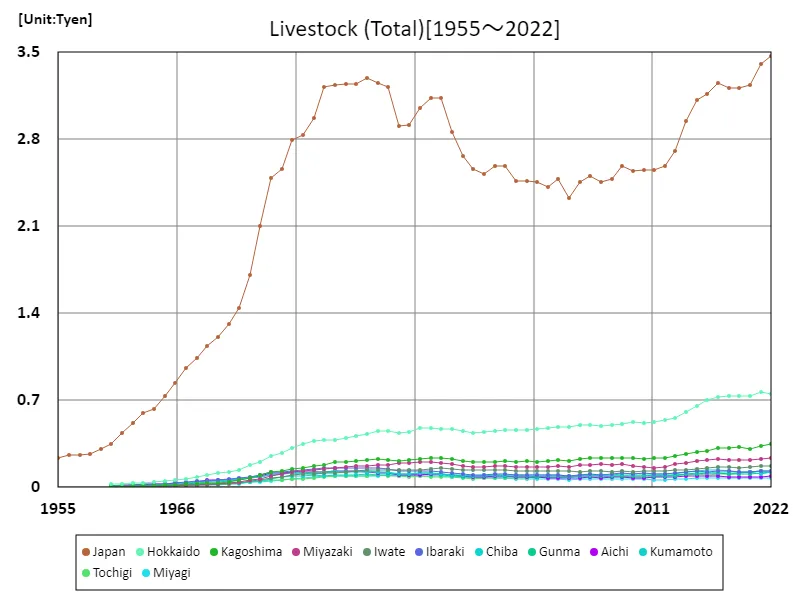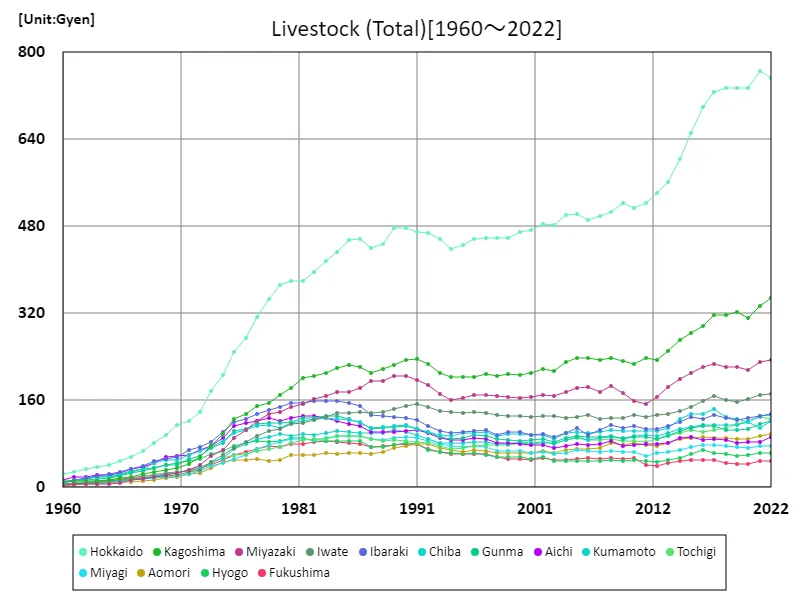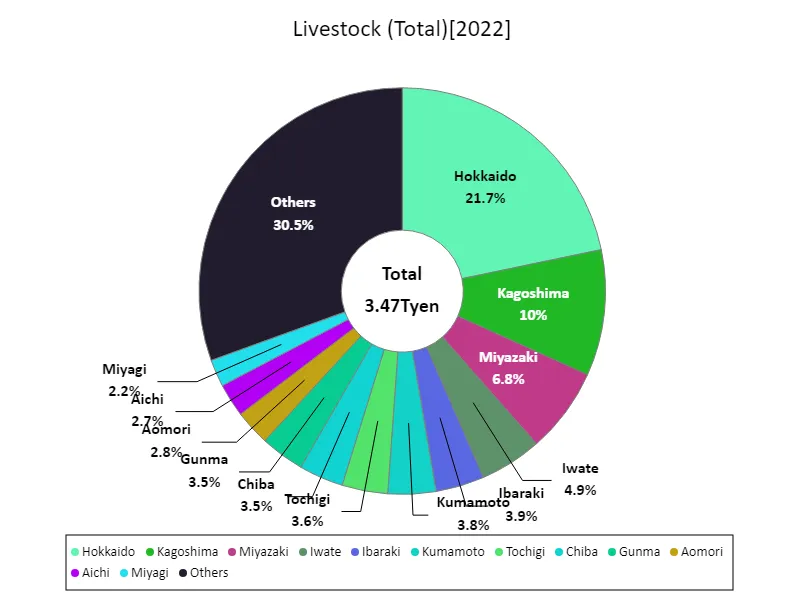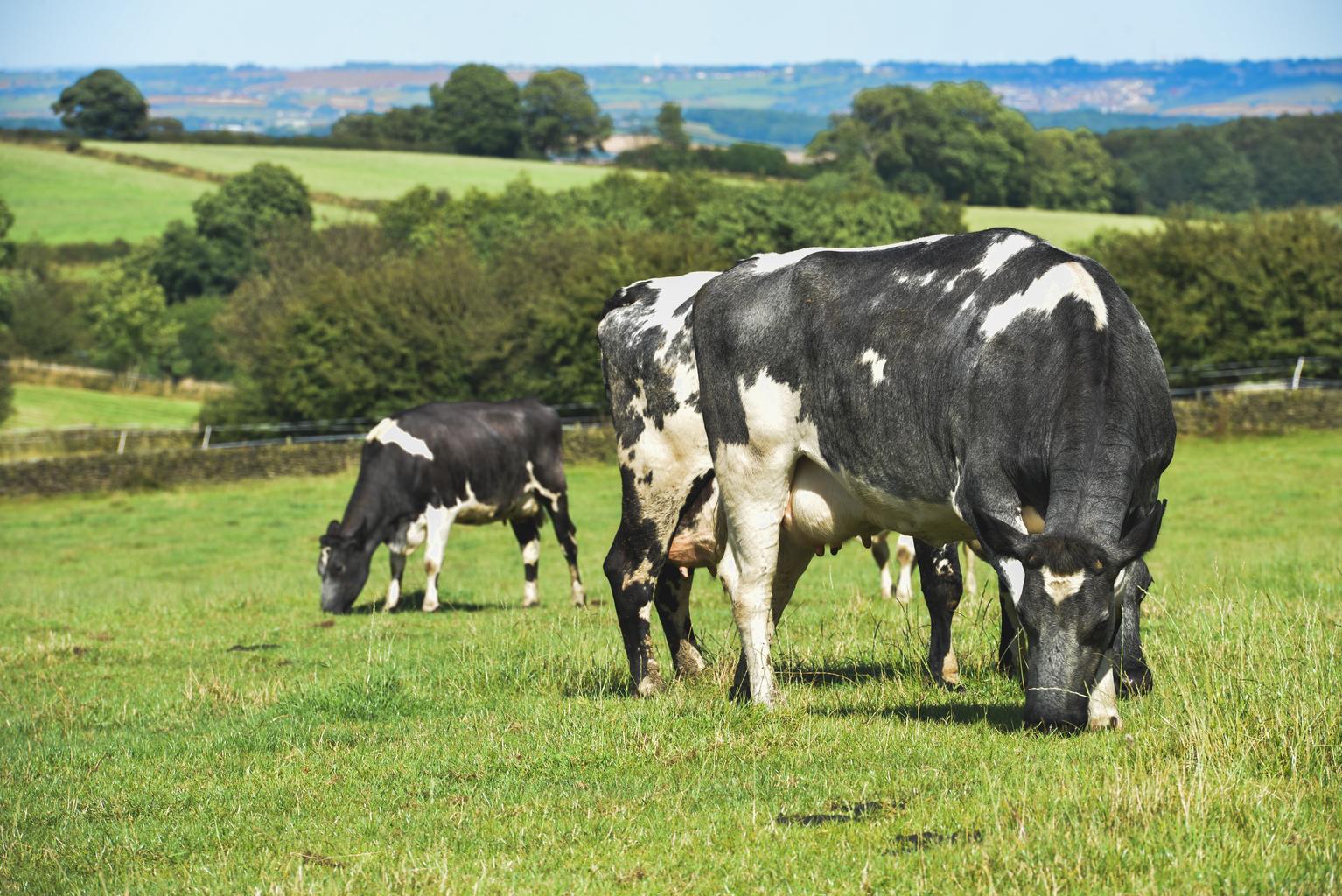Abstract
In Japan’s agriculture, livestock income accounts for an important portion of total crop income. According to data from 2022, total income from livestock farming nationwide reached 3.47 trillion yen. These figures show how important livestock farming is to Japan’s agricultural economy. Looking at past trends, income from livestock farming has continued to grow at a steady rate, and it is attracting attention as part of the diversification and high added value of agriculture. Furthermore, Japan’s livestock industry is supported by advanced technology and management, and the industry is also focused on improving quality and safety. Furthermore, in some areas livestock farming is a major agricultural industry and contributes to the local economy. Total income from livestock farming is an important source of income for the entire agricultural industry in Japan, and its importance is expected to continue to increase in the future.
Total livestock production income
Japan’s total livestock income grew steadily between 1955 and 2022. In particular, national income reached 3.47 trillion yen in 2022, reaching 100% of its peak. This growth is supported by technological innovations in agriculture, improvements in management, and expanding market demand. The livestock industry occupies an important position in Japan’s agricultural economy and has a major impact on local economies. Additionally, consumers are becoming more health conscious and the demand for safe, high-quality livestock products is also increasing. These trends contribute to the sustainable growth and development of the livestock industry.


The maximum is the latest one, 3.47Tyen of Japan
Total livestock production income (prefectures)
Japan’s total livestock income has undergone changes between 1960 and 2022. In particular, the high level recorded by Hokkaido in 2021, at 765 billion yen, is notable. However, it has now settled at 98.5% of its peak level. This trend reflects the influence of a variety of factors in the livestock industry. For example, these include changes in market demand, domestic and international competitive conditions, and the impact of climate change on production. Technological innovations and policy changes in the livestock industry are also having an impact. The fact that Hokkaido recorded the peak in livestock income indicates differences in the development of the livestock industry from region to region. A notable feature to date is that the growth of the livestock industry has come to occupy an important position in the agricultural economy. In the future, the livestock industry will need to achieve sustainable development while adapting to changes in demand and technological advances.


The maximum is 765Gyen[2021] of Hokkaido, and the current value is about 98.5%
Total livestock production income (latest year, prefecture)
Japan’s total livestock income recorded a high level of 3.47 trillion yen overall in 2022. Hokkaido accounted for the largest proportion at 754 billion yen, while the average was 73.8 billion yen. These figures show that the livestock industry plays an important role in Japan’s agricultural economy. The livestock industry brings in stable profits and contributes to revitalizing the local economy. Furthermore, technological innovation and improved efficiency have led to increased productivity. On the other hand, the livestock industry also faces important issues such as its impact on the environment and consideration of animal welfare. Going forward, we will need to respond to changes in demand and strengthening international competitiveness and develop a sustainable livestock industry.


The maximum is 754Gyen of Hokkaido, the average is 73.8Gyen, and the total is 3.47Tyen



Comments